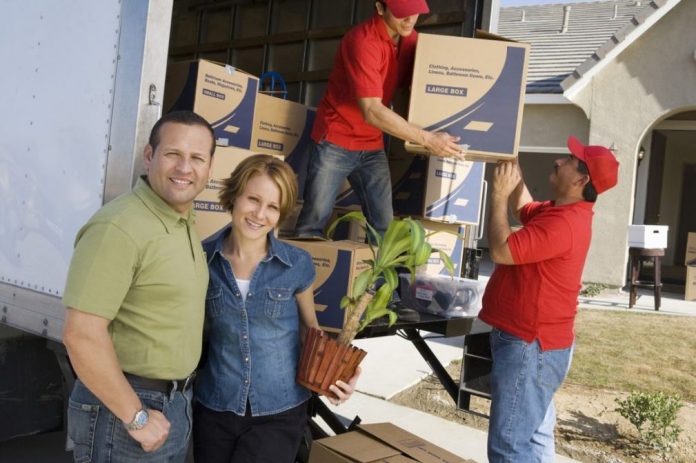At Amintro, our specific focus is on mature adults – those 50+ individuals who are embracing a stage of life that you might find alternately exciting or frightening. We try to help by sharing articles of interest, articles that will get you talking with your neighbour, a spouse or perhaps – a new Amintro friend. Today, we look at moving. When you’re 50+, moving isn’t just about friends and a pick up truck and maybe a case of beer – it involves a whole lot more planning!
In a previous blog we talked about the benefits of downsizing but what we didn’t address is how hard moving can be. It is both emotionally and physically taxing – never more so than when you are a mature adult. In fact, moving is typically ranked at #3 on the list of Top 5 Major Life Stressors. That’s why today, if you’re an older adult and thinking of moving, whether to downsize or simply “right-size” your life, we are offering Amintro’s Top Seven Move Suggestions for creating as stress free a move as possible!
7 Moving Tips for Grown-ups 50+
- Plan, plan and then plan some more. That old expression “the devil is in the details” has never been truer. Start by considering your neighbourhood and make a list of what you will need now and in your future. Consider this:
- Location – Scouting a great location that meets your needs both now and in the future is critically important. You might need easier access to medical services due to a health condition or need to utilize public transportation if driving becomes an issue. You will probably want to choose a location that is closer to family and friends, not farther away. Sourcing a home, condo or apartment that has amenities within walking distance will help you to stay fit and active and ensures that if the car is no longer an option, you’re still able to be self-sufficient.
- Start planning what’s coming with you and what will be donated, given to family members or simply put in the trash. No doubt this list will fluctuate greatly over the months before you move as you consider the items in your home carefully. What are those items that are truly treasured and those that have no particular special meaning. Consider this: Walk around your home with sticky notes and literally label what stays / will be donated / given to a family member / or trashed. Use sticky notes because these items might change over time. Think about only taking items that serve multiple purposes. An antique sideboard can come, if it has multiple drawers for storage and might also be used as a TV stand. If something can be repurposed or serves multiple functions – bring it. If it doesn’t it might be time for it to go.
- Planning ahead also entails contacting service agencies in your community that will take your unwanted items. Places like Habitat for Humanity or the Salvation Army (or similar in your hometown) need both time and notice to arrange for pick up of your larger items, often weeks in advance. Don’t assume that they will be available on moving day. In fact, some agencies don’t always have the resources to pick up donations so you might need to arrange two “move” dates: your “Donate” day and your actual move date.
- Don’t forget to make other calls too. You’ll need to change your address with the government, contact and cancel service providers like cable, heat and hydro and then make arrangements with new suppliers. You might need to change the branch location of the bank your normally deal with. Make a list of everyone to whom you currently pay a bill for services and that will help guide you on whom you have to contact. On your planning list, this item should fall within 45 days of your move date to avoid any confusion or being left without service in your new home. Don’t forget to arrange for new insurance!
- Make several trips to your intended new home at various times of the day. Look at traffic patterns, scout coffee shop locations and whether the community offers parks, the type of restaurants you enjoy and whether there are community services that are right for you and if so – are they free or charge a service fee. Love to read? Make sure there is a good local lending library where chances are, you’ll not only find books but plenty of other programs and resources for seniors.
- If you are a member of a service organization, make plans to visit the club location where you are moving. Rotary, Lions Club, KinsMen/Women, Optimists Clubs and so many, many other organizations have large groups in and around most major cities and in a number of smaller communities too. If you love volunteering, there’s no need to give it up.
- Book reputable movers. Even if you are the fittest 50+ adult around, moving day is not for the faint of heart. Perhaps your friends are not quite as fit as you are and chances are your family will be taking time off work to help get you settled and if the move takes 14 hours that doesn’t leave much time for “setting up.” Do your research, talk to other seniors that have moved and look online at reviews or call your Better Business Bureau. This is one time in your life you will want to budget for and splurge on the cost of hiring professionals to do the heavy lifting.
Save the beer, or a good bottle of wine (or two!) for your friends to share once the move is complete. Let friends and family help you focus on the positives of moving: a chance to set up and rearrange your furniture, place plants in windows to give life and ambience to your new space, and/or designing a more accessible kitchen that makes cooking a breeze. Maybe they’ll even help you throw a coat of paint on the walls – that’s a whole lot easier then hauling a couch up a flight of stairs or cramming a credenza in an apartment sized elevator! If you’re starting to think about a move and you have no specific timeframe in mind, it might be wise to consider starting the process up to a year in advance. Do it before your body “reminds” you it’s time to move, while you still are fit, active and looking forward to embracing your new community and do it while you have the time to plan ahead using Amintro’s ”Seven Tips for Moving Grown-ups.” Good luck!



























